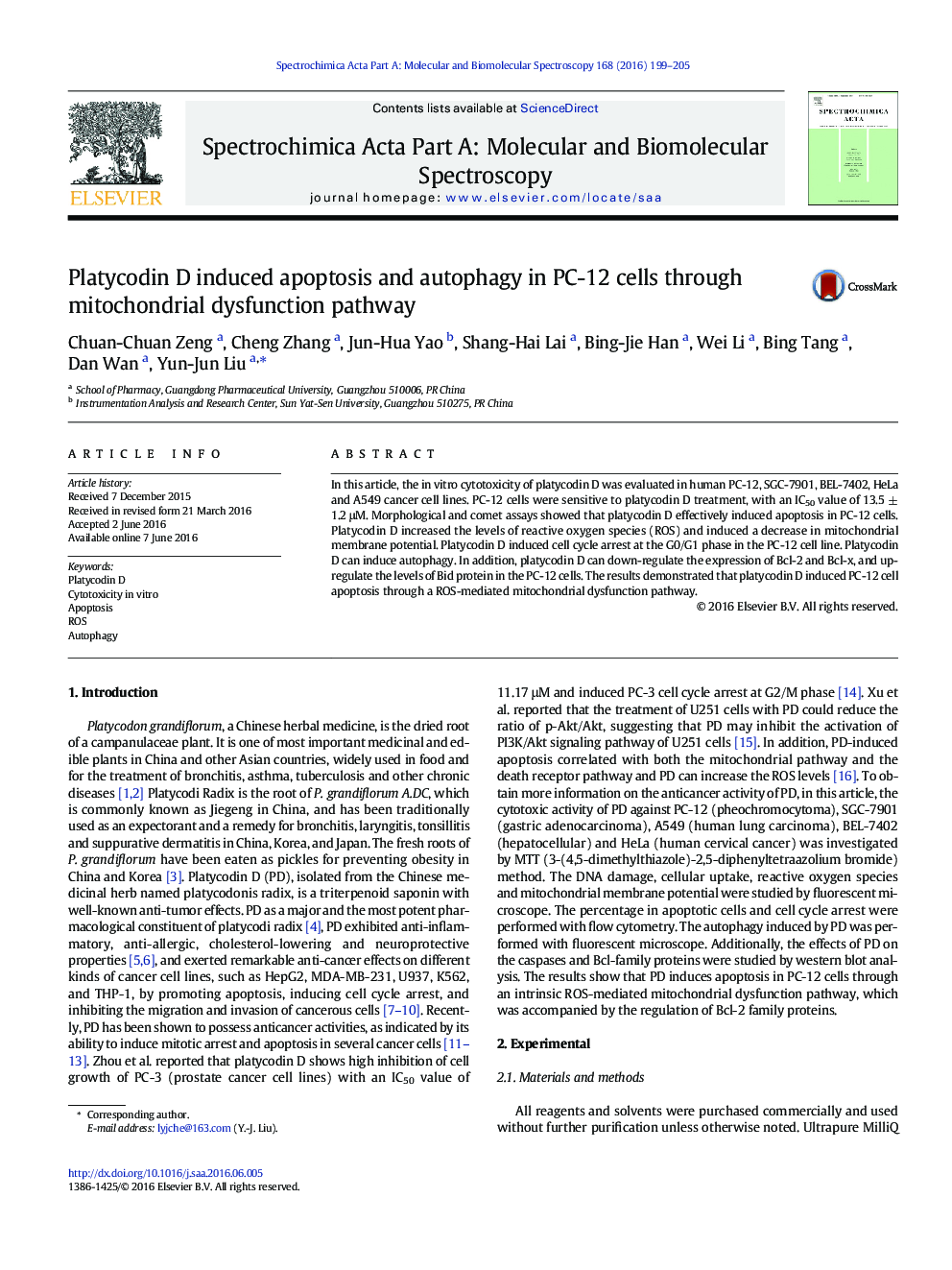| Article ID | Journal | Published Year | Pages | File Type |
|---|---|---|---|---|
| 1230424 | Spectrochimica Acta Part A: Molecular and Biomolecular Spectroscopy | 2016 | 7 Pages |
•The cytotoxicity of platycodin D against five cell lines was studied.•The apoptosis, comet assay and cellular uptake in PC-12 cells were investigated.•The levels of ROS, the changes of mitochondrial membrane potential and autophagy were assayed.•The cell cycle arrest was investigated by flow cytometry.•The expression of caspases and Bcl-1 family proteins were studied.
In this article, the in vitro cytotoxicity of platycodin D was evaluated in human PC-12, SGC-7901, BEL-7402, HeLa and A549 cancer cell lines. PC-12 cells were sensitive to platycodin D treatment, with an IC50 value of 13.5 ± 1.2 μM. Morphological and comet assays showed that platycodin D effectively induced apoptosis in PC-12 cells. Platycodin D increased the levels of reactive oxygen species (ROS) and induced a decrease in mitochondrial membrane potential. Platycodin D induced cell cycle arrest at the G0/G1 phase in the PC-12 cell line. Platycodin D can induce autophagy. In addition, platycodin D can down-regulate the expression of Bcl-2 and Bcl-x, and up-regulate the levels of Bid protein in the PC-12 cells. The results demonstrated that platycodin D induced PC-12 cell apoptosis through a ROS-mediated mitochondrial dysfunction pathway.
Graphical abstractThe cytotoxicity in vitro, apoptosis, comet assay, cellular uptake, ROS, mitochondrial membrane potential, cell cycle arrest, autophagy and the expression of proteins induced by platycodin D were investigated.Figure optionsDownload full-size imageDownload as PowerPoint slide
